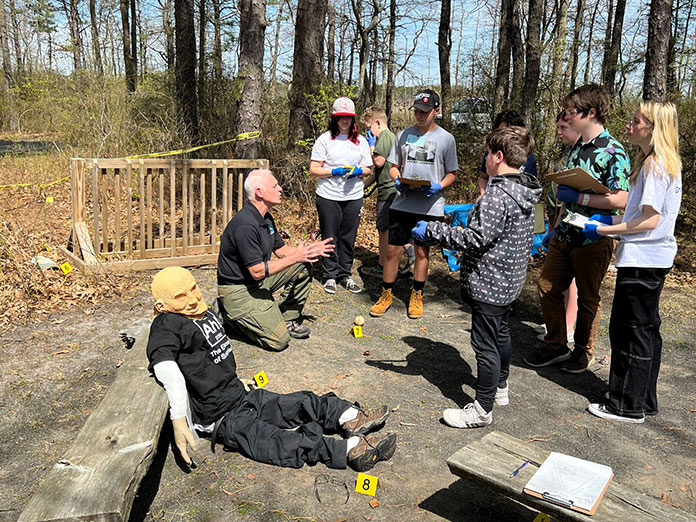
TOMS RIVER – A group of 17 students from Ocean County recently found themselves in the midst of a mysterious crime scene at Cattus Island County Park.
As they stumbled upon two lifeless “bodies.” The budding sleuths, ranging from grades 6 to 12, put their detective skills to the test. Notably, the corpses were actually dummies, set up as part of a mock crime scene staged at the culmination of a five-day training program.
The National CSI Camp’s course held during spring break allowed students to immerse themselves in the world of crime-solving techniques. Leading the program was Sean Clancy, a retired Captain of Detectives from the Atlantic County Prosecutor’s office, who is also the mastermind behind this innovative training.
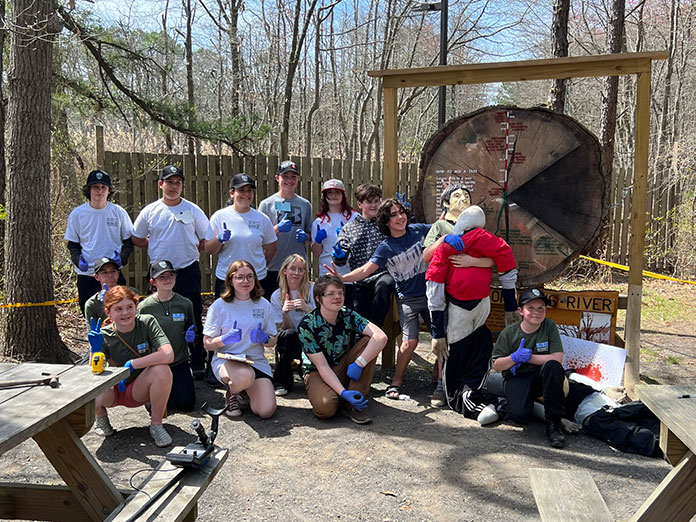
In the days before their arrival on the mock crime scene, students were engaged in various exercises that covered lifting fingerprints, handwriting analysis, testing unknown powders, and DNA extractions. They also delved into the intricacies of footprint casting, identifying bullet shell casings, detecting counterfeit bills, and other forensic analysis.
“As part of the course, I introduced a couple of drills to teach about logic,” shared Clancy. “I used the name Avon Barksdale, who was from the television show, ‘The Wire.’”
According to Clancy, who said he did drug investigations for many years, he found he could relate to the characters on the show because they were realistically depicted. Information about Barksdale would prove critical in evaluating the mock crime scene.
Jeremy Hartman, who retired from the Hamilton Police Department in Atlantic County, worked with Clancy to guide the students through the various hands-on experiences. The program emphasized developing critical thinking skills, particularly in analyzing clues, gathering evidence, and making observations to effectively piece together a criminal investigation.
Students learned about the importance of maintaining the crime scene’s integrity, preserving evidence, and thoroughly documenting all relevant information for subsequent analysis. In addition, the significance of teamwork quickly became apparent as the instructors divided the group into two sections and appointed leaders to evaluate the staged discovery of two lifeless dummies. Each team was provided with various tools, including evidence bags, a metal detector, a camera, and clipboards, to aid their investigation.
“Photographers are going to take the first four pictures,” Clancy shouted. “The first four pictures of the crime scene are an overall picture of the crime scene as though it’s in a box. After that, you will take it in from different angles.”
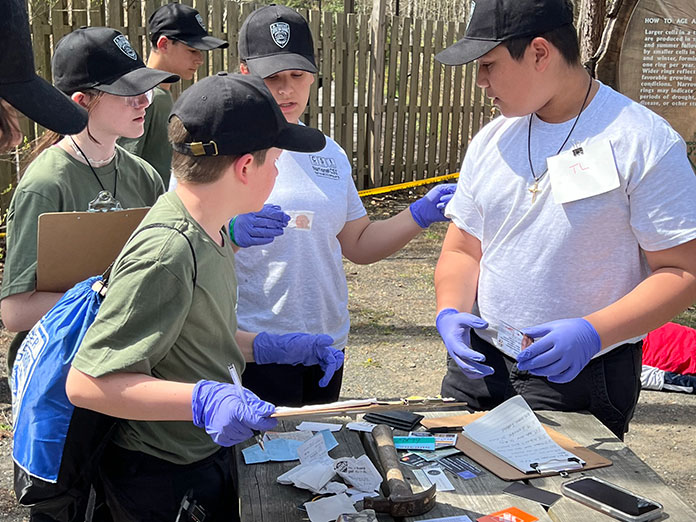
The team of detectives moved on to identifying evidence that would be numbered and bagged. Crime scene tape initially put up would be extended as the investigation continued. Finally, a series of measurements became part of the items documented by the appointed scribes.
When one of the teams noticed something bulging from the pocket of one of the victims, they asked if they could remove it.
“I wouldn’t touch anything yet, because you still need to photograph everything,” reminded Hartman.
The team leader summoned his group’s photographer to take pictures before removing the victim’s wallet. Once it was marked for evidence, the group decided it might be a clue to the deceased’s identity.
Although the driver’s license revealed the victim’s name was none other than Avon Barksdale, the picture on the license didn’t match. Instead, it seemed to depict the body discovered by the opposing team.
Hartman chuckled for a moment as he realized he’d inadvertently interchanged identifications. However, the junior sleuths continued evaluating the crime scene and came to some conclusions related to their discovery.
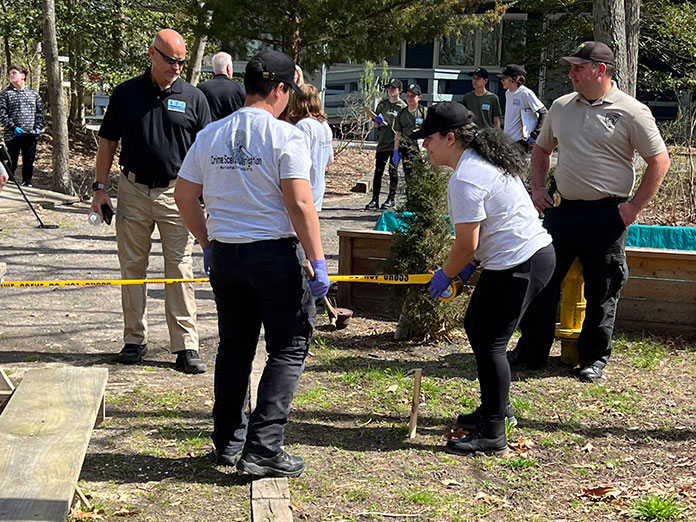
“He’s a member of the Marriott Envoy,” said the team leader. “He could be a person of high elite status, and this could be a possible hit job.”
Remarkably, both teams came across all of the hidden evidence and began coming up with some theories about the crime scene. The group was then called inside to debrief and discuss their findings.
“What does finding the shell casings tell you,” asked Clancy. “Did anyone look at the caliber of the two found?”
Students were quick to share their impressions, correctly identifying that the casings found at the crime scene indicated shots had been fired. With keen observation skills, they determined that the casings came from both a 9 mm and a 45 caliber firearm.
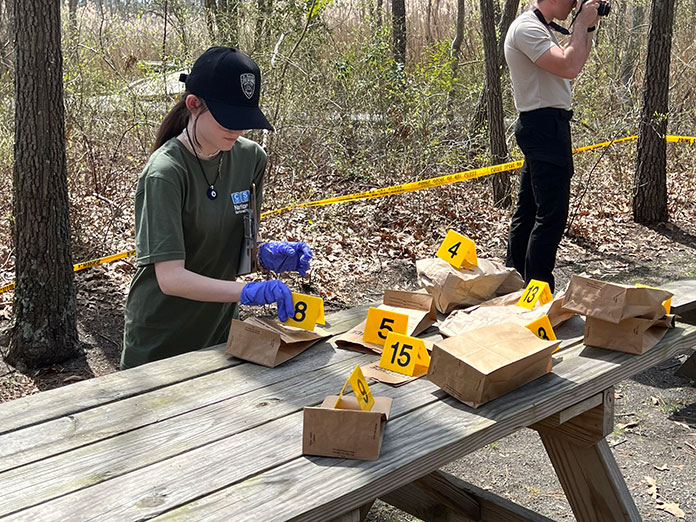
Other evidence included hotel keys, discarded drinks, and text messages. Clancy reminded the class that everything would require a complete analysis as part of the investigation.
After six local students from Little Egg Harbor signed up for the CSI camp, Little Egg Police Sgt. Sean Crotty said the Cavalry Baptist Church agreed to loan their van to transport the students. Crotty and two other Little Egg Police officers took turns lending their assistance throughout the program. Kyle Kleinow serves as a student resource officer for the Pinelands School District; Vincent Grosso was just sworn into the Little Egg Police Department.
Brick, Jackson and Toms River students also enjoyed the week of hands-on activities that challenged them to apply what they learned to a real-life scenario.






